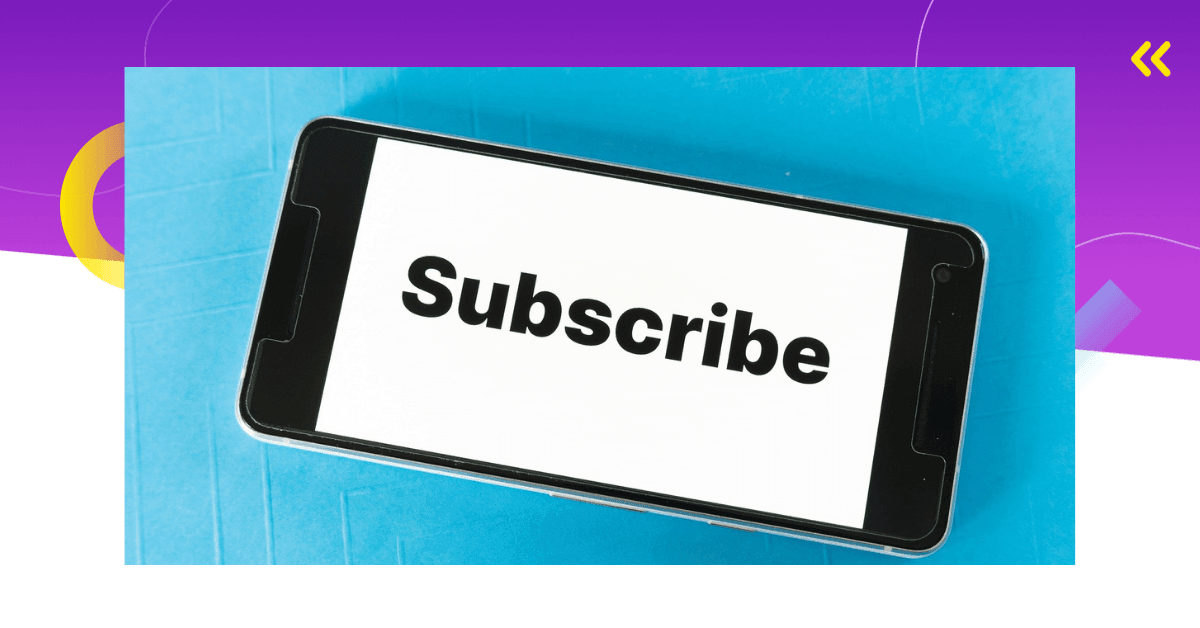Facebook Ads Manager updates happen regularly, sometimes even overnight.
In order to keep up with the users’ and advertisers’ demands, the platform constantly needs to change and adapt.
Keeping up with all of this can be overwhelming.
For this reason, we did the research for you. Read this article and learn about the latest and most significant Facebook Ads Manager updates and announcements all marketers need to know about.
Note: the Facebook company is now called Meta. We don’t want this to confuse you, so in this article, we’ll stick with the company’s old name.
Let’s begin.

1. Changes to Facebook Ad Manager Objectives
There are new Facebook Ads Manager objectives you can now choose from for your Facebook campaign. While some are truly new, others are simply new names for existing objectives. The goal was to simplify the process of choosing an objective for your campaign and help you reach your goals.
When choosing an objective, you should go with the one that best matches your business goals. There are now six objectives to choose from six campaign objectives: awareness, traffic, engagement, leads, app promotion, and sales.
According to Facebook (Meta), “Campaigns you’ve created with the previous objectives will remain active and there is no need to make any changes to your existing campaigns.”

2. New “Optimize Text per Person” Feature
In June 2021, Facebook Ads Manager rolled out a new feature in the ad setup process. It is called “Optimize Text Per Person”, and it helps with automated ad customization.
Familiar with Google Ads?
Then you should know that this ad option works very similarly to Google’s famous Responsive Search Ads. Just like with this Google’s feature, it’s all about automation and testing.
The “Optimize Text Per Person” feature allows Facebook to automatically rotate your ads’ captions, headlines, and descriptions. Facebook machine learning predicts what users will respond to best and shows them different combinations.
Let’s say your headline says, “Christmas discount,” and your description says, “Get discounts on holiday merch.” For selected users, the Facebook algorithm may decide to swap the two and show the description first.
The best thing about this feature?
It’s super easy to set up.
In the ad setup process, there is an “Optimize Text Per User” button. You only need to enable it, and that’s it.
Previously, there was a similar feature on Facebook called “multiple text variations for ad copy” that was introduced in 2019. Advertisers needed to provide multiple ad text lines, and Facebook would choose the best ones.
The new version is similar to the old one. The main difference? It spares the advertiser from having to create different copy versions. Instead, it relies on any existing ad elements to predict the most likely user response.

3. Instagram Reels Ads Are Now Available to Everyone
Short video clips have been a trend for a while now, driving the success of platforms like TikTok.
Facebook-owned Instagram decided to hop on the bandwagon as well.
For this reason, Instagram rolled out its very own Instagram Reels back in August 2020. This feature works very similarly to the one on TikTok.
Reels allow users to share short-form videos in separate feeds. Short as they are, they have good chances of catching the users’ attention.
In the light of that, Facebook saw the Reels’ advertising potential. Therefore, in April 2021, they started testing Reels for advertising in selected countries (including the US, the UK, France, and Canada).
Obviously, the test turned out to be a success.
In June 2021, Facebook officially launched Reels ads for all advertisers globally. The feature was warmly welcomed by international accounts that didn’t get access to it in the test phase.
Sometimes, Facebook sets restrictions for smaller ad accounts. Not in this case. In order to create Reels ads, you don’t have to fulfill any kind of account-level requirements.
You may be wondering – how and where do Reels appear?
Let’s quote Instagram on this, “Reels is the best place on Instagram to reach people who don’t follow you and a growing global stage where brands and creators can be discovered by anyone.”
Sure, this is an embellished PR line.
The bottom line is that Reels are a new way to reach audiences with Instagram promotions. If the Reels feature keeps on growing, their advertising power will increase simultaneously.
Reels ads are displayed as a full-screen ad format in between regular Reels. Just like Reels, the ads can be up to 30 seconds long. Users are able to like, comment, watch, save and share them.

4. No More Targeting Teens by Interests
Facebook introduced a new privacy update that restricts ads that target teenagers.
What does this mean exactly?
Advertisers are no longer able to target teenagers based on their interests and online activity. These targeting options can now only be applied to users over the age of 18 globally (over 20 and 21 in some countries).
When it comes to those under the age of 18, advertisers can now to target them by their age, location, and gender only.
Why such a move?
According to Facebook, they want to create a safe and private experience for young people on their platform.
This update should help “protect” teens from ads that promote things like extreme weight loss, online dating, and similar potentially dangerous content. At Facebook, they are aware of the impact of social media on young people, hence they’ve decided on this move.
Therefore, if your target audience consists of young people, you should be aware that your targeting options are now limited.
One solution to this problem is investing in the quality and quantity of your ad creatives. This approach may help you overcome the targeting obstacles and find new ways to reach your target audience.

5. The 20% Rule Is Not a Rule Anymore
If you’ve ever advertised on Facebook, you must have heard of its “20% text on ad images” rule.
You’ve probably hated it as well.
There is no need to worry about that anymore.
Facebook no longer rejects ads that take up more than 20% of ad images. This means you have more creative freedom and no additional work to do if Facebook refuses your ads.
Nevertheless, Facebook kept the 20% rule as a recommendation for the best performance. According to them, these types of ads tend to perform better than those where the text takes up more space.
Ready to ignore the recommendation and put a bunch of text into your ads? Hold on a minute there.
There is one more thing you should know.
No, Facebook may not outright reject your ad. However, it may still limit the reach of your ads. Facebook Ads Manager now gives your ads an “Image Text Rating” of either OK, Low, Medium, or High. Based on this rating, Facebook will determine your ad reach.

6. Reach New App Users with Automated App Ads
If you’re looking to advertise an app on Facebook, here’s an update you have to know about.
In the fall of 2020, Facebook launched Automated App Ads (AAA). This feature allows app advertisers to create fully automated campaigns optimized for the highest performance. To achieve this, it utilizes machine learning.
Automated App Ads are an upgrade to Facebook’s standard Manual App Ads.
The difference between the two?
When it comes to Manual App Ads, you can have multiple ad sets and ads in a single campaign. Also, you need to manually test creatives and their combinations.
Automated App Ads are easier to set up. In a single campaign, you can only have one ad set and one ad.
Moreover, its dynamic creative testing feature lets you automatically test different creative combinations. All you need to do is provide up to 50 videos/images and five headlines and descriptions.
Not everything is as ideal as it sounds, though.
The biggest drawback of Automated App Ads is that they don’t support certain features. This includes targeting based on age, gender, demographics, interests, etc. These ads only support targeting by country, language, and operating system.
They also don’t support certain ad formats like playable ads, carousel ads, and Instant Experience ads.
It is important to point out that this feature is still a work in progress. We’re sure that Facebook will make some more updates to AAA, and we’ll keep up with them.
For now, if you want to find out if AAA campaigns are a good fit for you, you can try running an A/B test against your standard app campaigns. Create the same setup for both campaigns (target country, creatives, optimization goal).
Run the tests for ten to 28 days, and see if the results with AAA will be any better than usual.
![]()
7. Limited Access to Data as of iOS 14.5
This is not a Facebook Ads Manager update per se, but it is something that strongly affected Facebook advertising.
It’s also something that pushed Facebook into announcing new updates.
In the first half of 2021, Apple has introduced privacy changes starting with iOS 14.5. These changes apply to IDFA (Identifier for Advertisers). Within any app, iOS users can now opt in and out of data collection.
That includes the Facebook and Instagram app as well.
Those users who opt out of data collection decline to have their data used for advertising purposes. For this reason, it is no longer possible to target these users based on certain attributes.
This has impacted all marketers trying to reach people on their mobile devices. However, this situation has been more damaging to app marketers than anyone else.
App marketers now have very limited and less granular data on their opt-out audience.
They get to see very limited demographic data, CPIs and number of installs only appear after a week, the number of campaigns and ad groups is limited, etc. The only exact data that advertisers can see are ad spend and CPMs.
All of this made advertising on Facebook very, very challenging. Because of all the missing data, Facebook ad campaigns aren’t as optimized as they used to be.
To combat this lack of data, Facebook has announced new performance, reporting, and measurement features. This includes:
- Aggregated Event Measurement for iOS14 users
- View-through attribution will become a default feature
- Consideration of all advertiser-associated URLs
These future Facebook Ads Manager updates are an attempt to fill the reporting and measurement gap while still protecting user privacy.
When will they appear? Will they fulfill their purpose? We have yet to see.
Wrapping up on Facebook Ads Manager Updates
This is it. These are the most significant Facebook Ads Manager updates all Facebook advertisers should know about.
We will regularly update this list whenever any new major update comes up.
Until then, make sure to understand all these Facebook Ads Manager updates and comply with them.







Comments